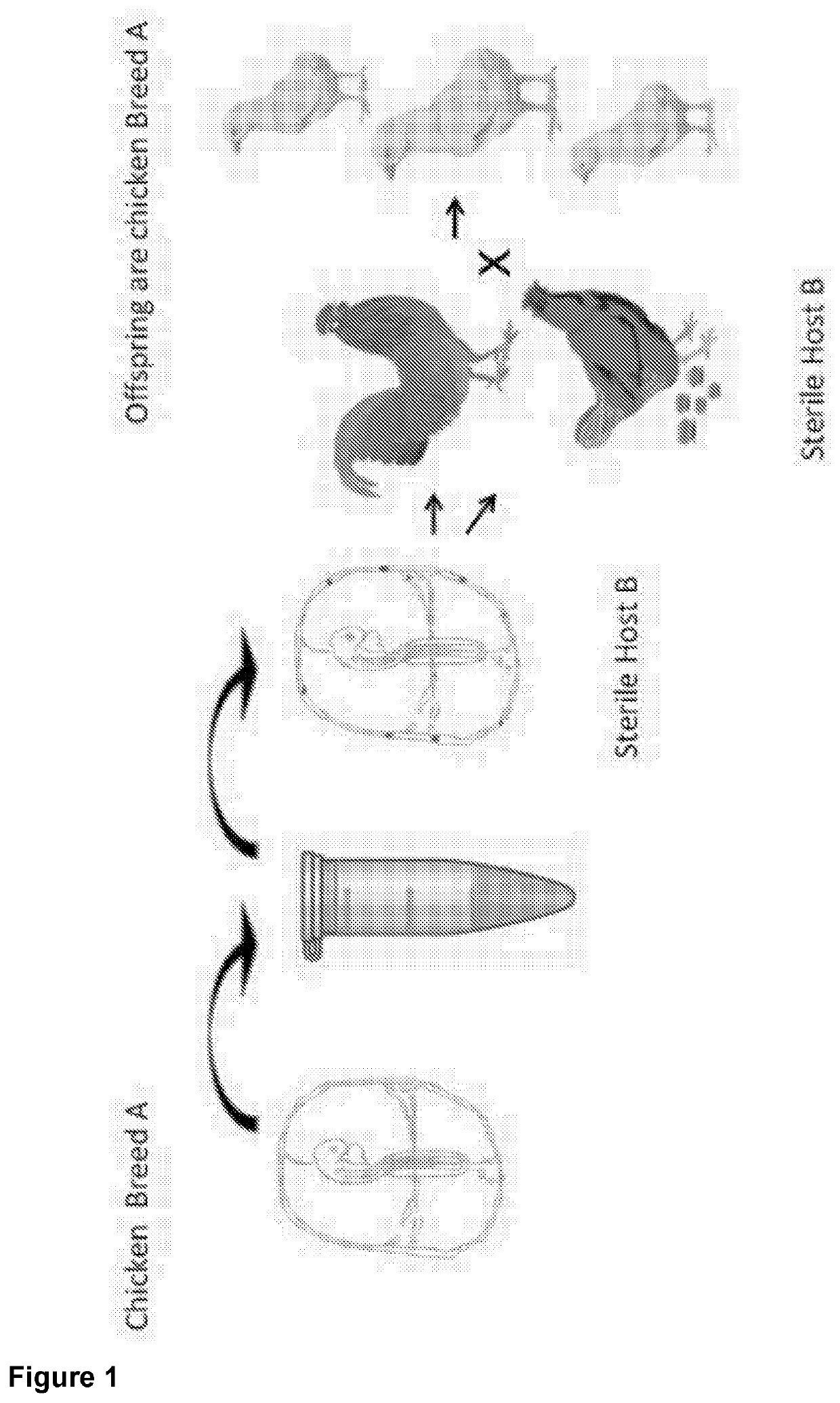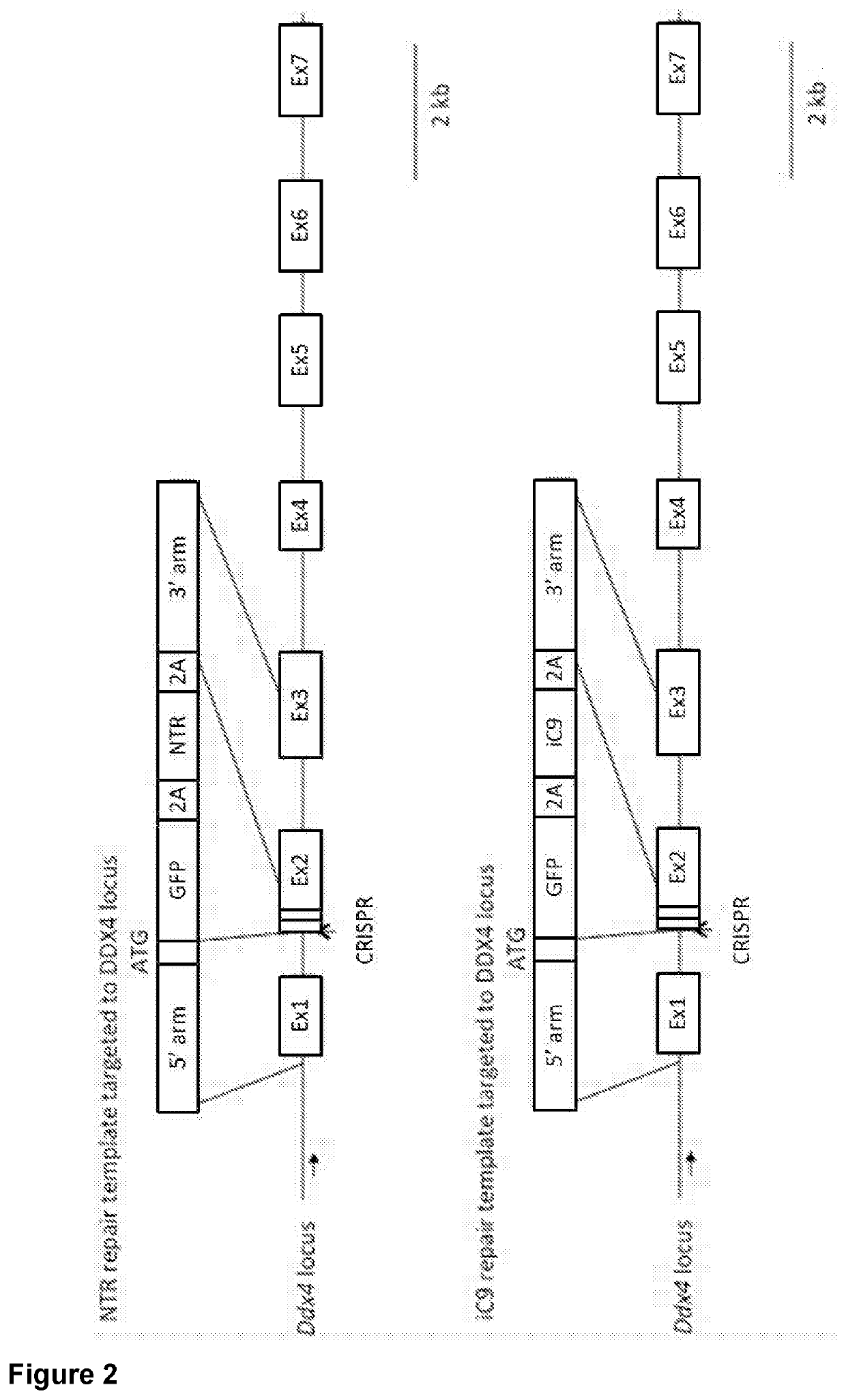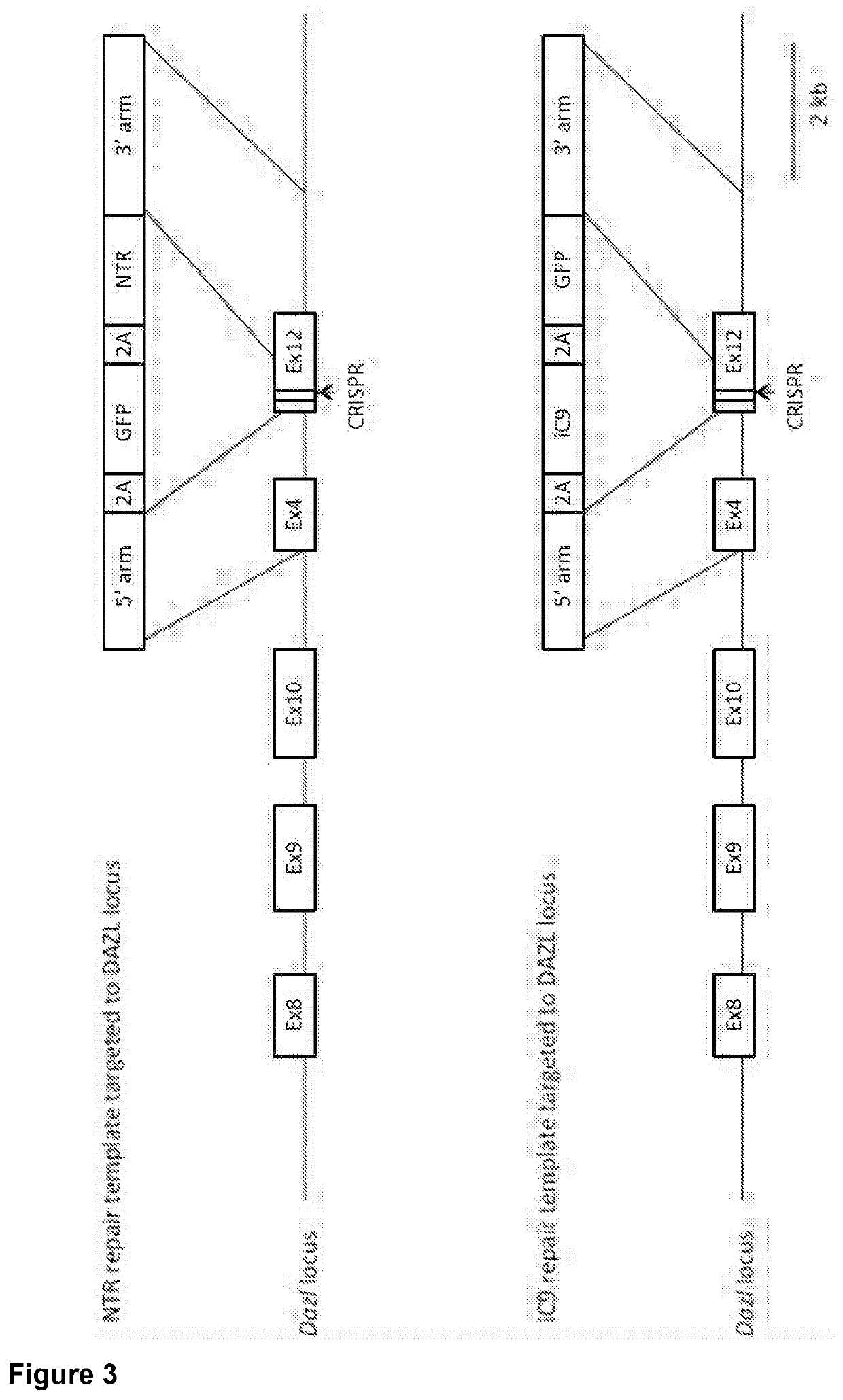Genetically modified sterile avians and method for the reconstitution thereof
a technology of sterile avians and a technology of recombinant dna, which is applied in the field of genetically modified sterile avians, can solve the problems of inefficient and difficult process of bird breeds produced from isolated reproductive cells, and inability to carry germ cells
- Summary
- Abstract
- Description
- Claims
- Application Information
AI Technical Summary
Benefits of technology
Problems solved by technology
Method used
Image
Examples
example 1
[0080]Selective Ablation of Chicken Primordial Germ Cells (PGCs) Through Modification of the Chicken Genome with an Inducible-Caspase 9 (iC9) Transgene.
[0081]Preparation of DNA Constructs Used to Produce iCasp9-Transfected PGCs
[0082]To express inducible Casp9 specifically in PGCs, CRISPR / Cas9 gene editing was used to mediate a sequence insertion in the following loci that are specifically expressed in PGCs:[0083]DDX4: Chicken vasa homolog, an RNA helicase, is expressed specifically in germ cells by the DDX4 locus. Targeted insertion of exogenous genes at the DDX4 start codon (ATG), was undertaken to achieve germ-cell specific expression of the corresponding proteins.[0084]DAZL: The DAZL locus drives expression of the RNA-binding protein DAZL. DAZL expression is also germ-cell specific, and has been measured as at least 10-fold higher than DDX4 expression (Jean et al. 2014). Targeted insertion of exogenous cDNAs at the stop codon (TGA) of the DAZL locus was used to achieve germ-cell ...
PUM
| Property | Measurement | Unit |
|---|---|---|
| concentration | aaaaa | aaaaa |
| concentration | aaaaa | aaaaa |
| dimerisation stability | aaaaa | aaaaa |
Abstract
Description
Claims
Application Information
 Login to View More
Login to View More - R&D
- Intellectual Property
- Life Sciences
- Materials
- Tech Scout
- Unparalleled Data Quality
- Higher Quality Content
- 60% Fewer Hallucinations
Browse by: Latest US Patents, China's latest patents, Technical Efficacy Thesaurus, Application Domain, Technology Topic, Popular Technical Reports.
© 2025 PatSnap. All rights reserved.Legal|Privacy policy|Modern Slavery Act Transparency Statement|Sitemap|About US| Contact US: help@patsnap.com



